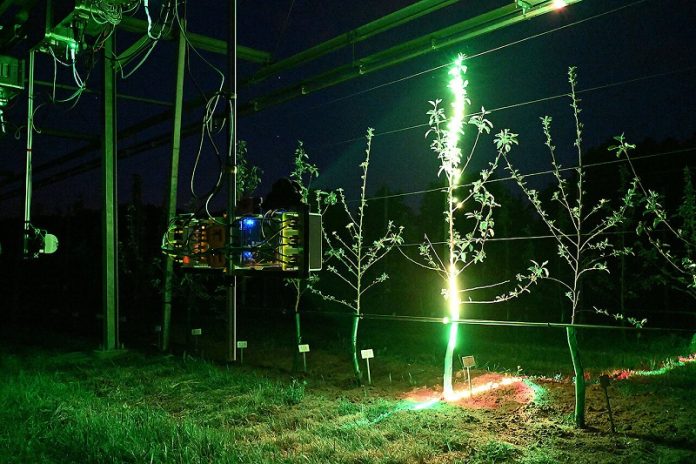
Harvesting fruits and vegetables like apples, strawberries, and asparagus often depends on human labor—but finding enough skilled workers has become increasingly difficult.
To help farmers meet this challenge, scientists are working on robots that can help with harvesting tasks.
While some early prototypes exist, experts say there’s still a long way to go before robots can harvest crops as well as humans.
That’s where a new invention comes in.
A research team from Julius-Maximilians-Universität (JMU) Würzburg, led by robotics professor Andreas Nüchter, has developed an advanced 3D laser scanner to improve the vision and sensing abilities of field robots.
The system is being tested at the Leibniz Institute for Agricultural Engineering and Bioeconomy (ATB) in Potsdam, Germany, where it’s already showing promising results.
Mounted on a moving platform that circles a row of 120 apple trees, the 3D scanner collects detailed data about the plants.
This technology helps the robots “see” and understand the shape, size, and condition of each tree—essential skills for any harvesting machine. Since no two plants grow the same way, the robots need accurate, adaptable sensors to know when and how to pick fruit.
According to Dr. Manuela Zude-Sasse, the ATB scientist leading the field tests, one major goal is to determine the best time to harvest by measuring important traits like water content.
Knowing the exact stage of ripeness is key to improving crop quality, harvest timing, and even how long the produce can be stored after picking. With global warming causing more unpredictable growing conditions, precise information about fruit development is becoming more important than ever.
The new scanner uses a technology called structured light. It shines laser beams in three different colors—green, red, and near-infrared—onto the plants and reads the light that reflects back.
Each wavelength helps gather different types of information, allowing scientists to not only map the tree’s shape but also learn about its internal health, such as how much water the fruit contains.
Built to handle real-world conditions, the scanner is weather-resistant and works in temperatures ranging from 0 to 40°C.
The system is meant for experimental use only, and because the lasers could harm human eyes if looked at directly, the test area is carefully controlled to keep people safe. The lasers don’t hurt the plants.
The project brings together JMU’s expertise in laser technology and ATB’s deep experience in crop research.
Interestingly, Professor Nüchter’s team is also developing similar laser systems for moon and Mars missions to search for water, proving that this technology has applications far beyond Earth—or the orchard.



